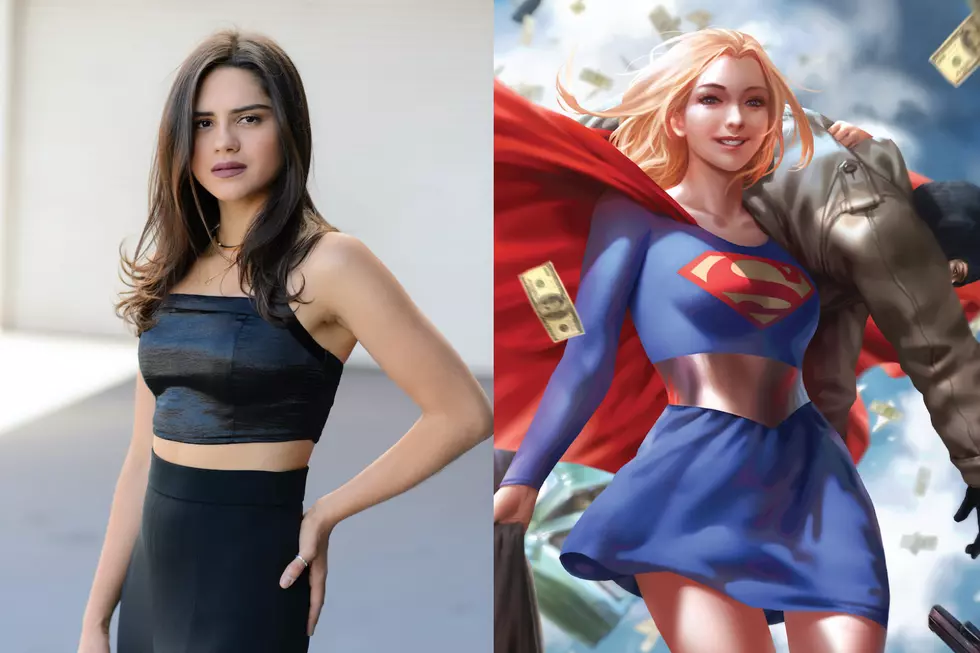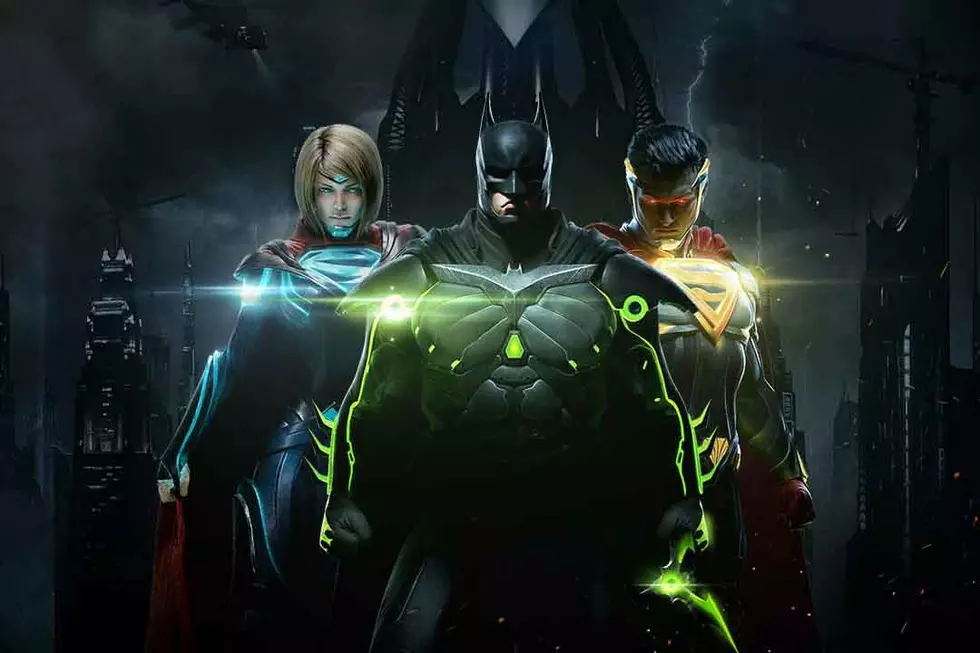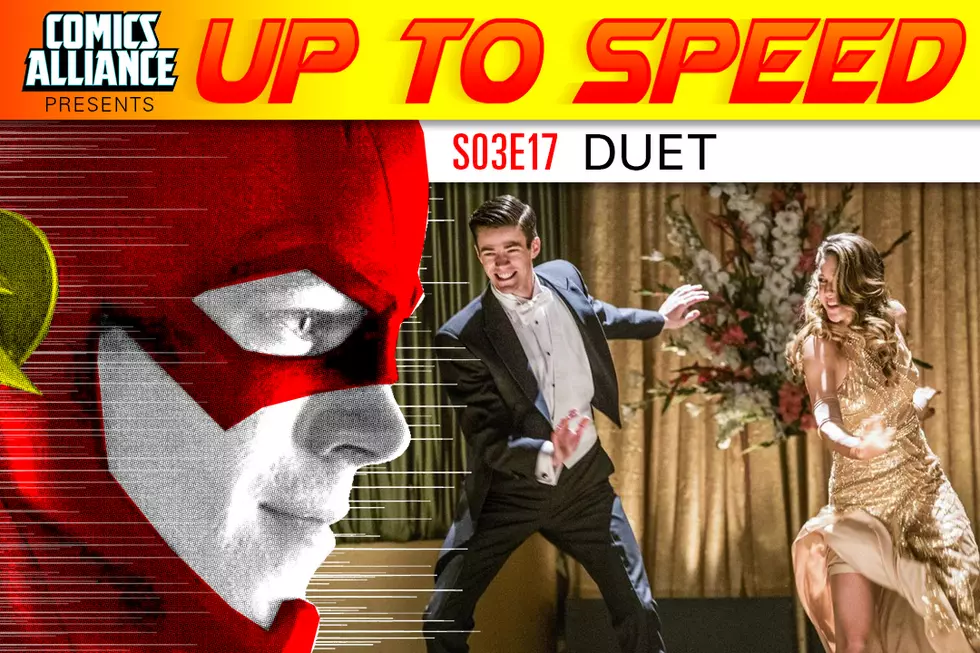
Kara’s Big Secret: Mariko Tamaki And Joelle Jones On ‘Supergirl: Being Super’
2016 is almost offer, but there's still one comic of this year that we're really excited about, coming in right under the wire. Supergirl: Being Super #1 is the first issue of a four-part out-of-continuity mini-series that explores Supergirl's history. It's basically a teen drama starring Kara Danvers, written by award-winning This One Summer writer Mariko Tamaki, with art by Joëlle Jones. It also features inks by Sandu Florea, colors by Kelly Fitzpatrick, and lettering by Saida Temofonte. For those keeping score, that's a very female-heavy creative team, with industry veteran Florea as the only man involved.
I've read the first issue, and I can tell you right now that it's something you absolutely must check out, particularly if you're already a fan of Supergirl or any of the creators involved.
With the book coming out tomorrow, December 28, ComicsAlliance sat down with Tamaki and Jones to talk about what makes Supergirl different from other people, what makes this version different from other Supergirls, and why giving Supergirl a queer best friend was so important.
ComicsAlliance: Let’s start big: Who is Kara Zor-El? In having the freedom to do your own take on her, what qualities have you each found to be essential?
Mariko Tamaki: I think Kara is an outsider well disguised as an insider. On the outside, everything in her life makes sense and fits in with her environment. At the same time, on the inside, she’s an alien. So she’s got this tremendous secret, a part of herself that she can’t ignore, that clearly indicates she’s not like everyone else.
CA: And on that note, are there particular Supergirl stories from the past that you look to for inspiration?
MT: I’ve read a lot of Supergirl stories, and they’re all great and inspiring and absolutely informed this work. I really liked Supergirl Vol. 1: Last Daughter of Krypton (The New 52) by Michael Green, Mike Johnson and Mahmud Asrar. I’m also a big fan of Rainbow Rowell, Andrew Smith, Phoebe Gloeckner, Hope Larson, Nate Powell, Tom Petty, Sleater-Kinney, Jill Soloway, the list goes on. This comic was also inspired by Gene Yang’s recent work in New Super-Man.
Joëlle Jones: I wanted to stay true to the Supergirl books Jim Mooney did in the '60s. They have such a sense of play and fun, and I wanted to use that as a jumping off point for my part of the storytelling. Mariko’s script has all of it, but balances it out nicely with the complications of a teen’s life.
CA: This series was announced as being out-of-continuity with the main Supergirl comic. How early was that decision made, and do you feel like it’s important to getting to do what you want to do with the story?
MT: It was presented to me as an out-of-continuity comic project. I think it’s nice to have the opportunity to take a character and do something different with them. I respect there are some people who have invested in the larger arc. I have too! But I was really into the chance to go where I was inspired to go, and I was happy DC gave it to me. Yay DC.
CA: I want to talk about Jen and Dolly, but honestly I mostly want to talk about Dolly. Kara having a queer best friend is really important to me, as I’m sure it will be to many readers. And the fact that she presents herself with a distinctly queer style is both realistic and all too rare in superhero comics. I’d love to hear how the two of you arrived at and collaborated on the character and her appearance.
MT: I’m so glad you like Dolly. I like Dolly. Dolly is an amalgamation of many of the amazing queers I’ve had in my life since I came out in university. I had all these ideas when I started writing her, about her style, mostly about her t-shirts (which she makes herself), her attitude, all that. I definitely wanted her to be an out and proud dyke, to be someone, much like Kara’s other friend Jen, who is really clear on who she is and wants to be. I love Joëlle's character design for Dolly and all the characters in Being Super.
JJ: I can’t remember all of the descriptions in the original character outline I got from Mariko, but I remember reading it and knowing exactly what she was going for. I think in comics you can get tired of drawing the same things over and over. Dolly was a nice break from all the abs and thigh gaps I usually draw.
CA: I also really enjoy this take on Kara’s adoptive parents. Her dad walks an almost Ron Swanson-esque line of being exactly as gruff as he could be before becoming dislikable. Mariko, how did you approach those characters and relationships? And Joëlle, how did you arrive at the Danvers’ designs?
MT: I wanted Kara to have these very independent parents, to have a family that was kind of its own little community. There is definitely some Ron Swanson in Kara’s dad, some mustache force to him, although I wasn’t thinking of Ron at the time. As I was working on this, I was watching a lot of documentaries about people living in the South Pole (which, to be clear, is something I am almost always doing), mountain climbers, marathoners, a lot of rugged determined people, so that was something I wanted her dad to be. And then I wanted her to have this super heart-open loving mom, slightly more traditional, a person who can counterbalance and give Kara all the things her dad refuses to give. I love Joëlle’s drawings of them too!
JJ: Same thing as Dolly, I just wanted to try for something different.
CA: One of the things that usually separates Supergirl from Superman is that unlike him, she remembers something of Kryptonian life. But this Supergirl doesn’t seem to have any knowledge of her time before Earth. Is that mystery going to be a direct part of the plot, or is it more of a character choice?
MT: Plot. And character, I suppose. I always liked that part of the Superman story, and I wanted to play with that for this storyline. So, yes, Kara doesn’t remember her life on Krypton, her life before she landed on Earth. I wanted Kara’s connection to her past to evolve as the story went along, so I set it up that she had little to no conscious memory of it when we start.
CA: Is it hard to transition from making comics about characters you created from scratch to handling characters that are owned by companies and have been around longer than any of us?
MT: It’s a bit of a different muscle, because you have to connect with this existing character and do that work. But it’s still about writing a full-bodied person, and populating your story with real people.
CA: Obviously I’m not going to ask you for spoilers, but I’m curious if you can offer anything about the overall arc of this series? What should people come to it looking for, and what do you hope readers find?
MT: Oh. You know, personally I’m always reading spoilers. But I never give any out. I hope readers connect with these characters. I hope they like the story. Fingers crossed. I think if you come looking for a story about alien teen realness, you’ll find it.
JJ: I just hope readers dig it.
Supergirl: Being Super #1 goes on sale Wednesday 27, 2016.
More From ComicsAlliance









